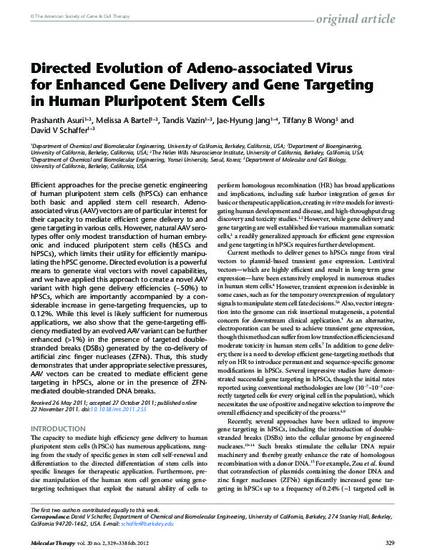
Efficient approaches for the precise genetic engineering of human pluripotent stem cells (hPSCs) can enhance both basic and applied stem cell research. Adenoassociated virus (AAV) vectors are of particular interest for their capacity to mediate efficient gene delivery to and gene targeting in various cells. However, natural AAV serotypes offer only modest transduction of human embryonic and induced pluripotent stem cells (hESCs and hiPSCs), which limits their utility for efficiently manipulating the hPSC genome. Directed evolution is a powerful means to generate viral vectors with novel capabilities, and we have applied this approach to create a novel AAV variant with high gene delivery efficiencies (~50%) to hPSCs, which are importantly accompanied by a considerable increase in gene-targeting frequencies, up to 0.12%. While this level is likely sufficient for numerous applications, we also show that the gene-targeting efficiency mediated by an evolved AAV variant can be further enhanced (>1%) in the presence of targeted double stranded breaks (DSBs) generated by the co-delivery of artificial zinc finger nucleases (ZFNs). Thus, this study demonstrates that under appropriate selective pressures, AAV vectors can be created to mediate efficient gene targeting in hPSCs, alone or in the presence of ZFNmediated double-stranded DNA breaks.
